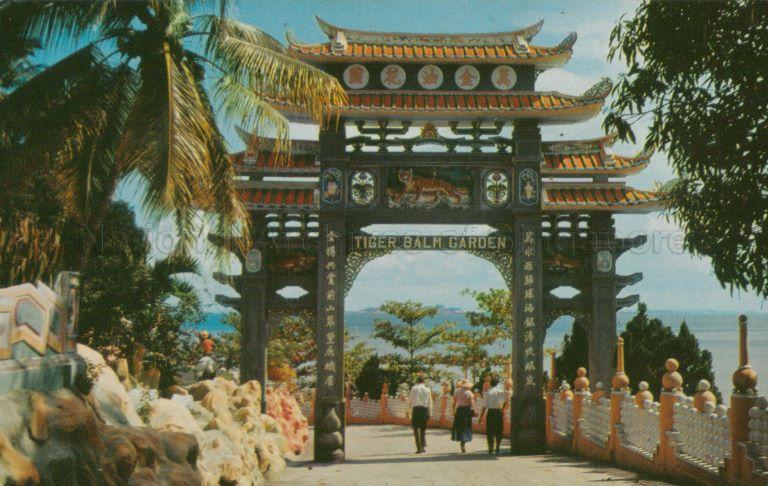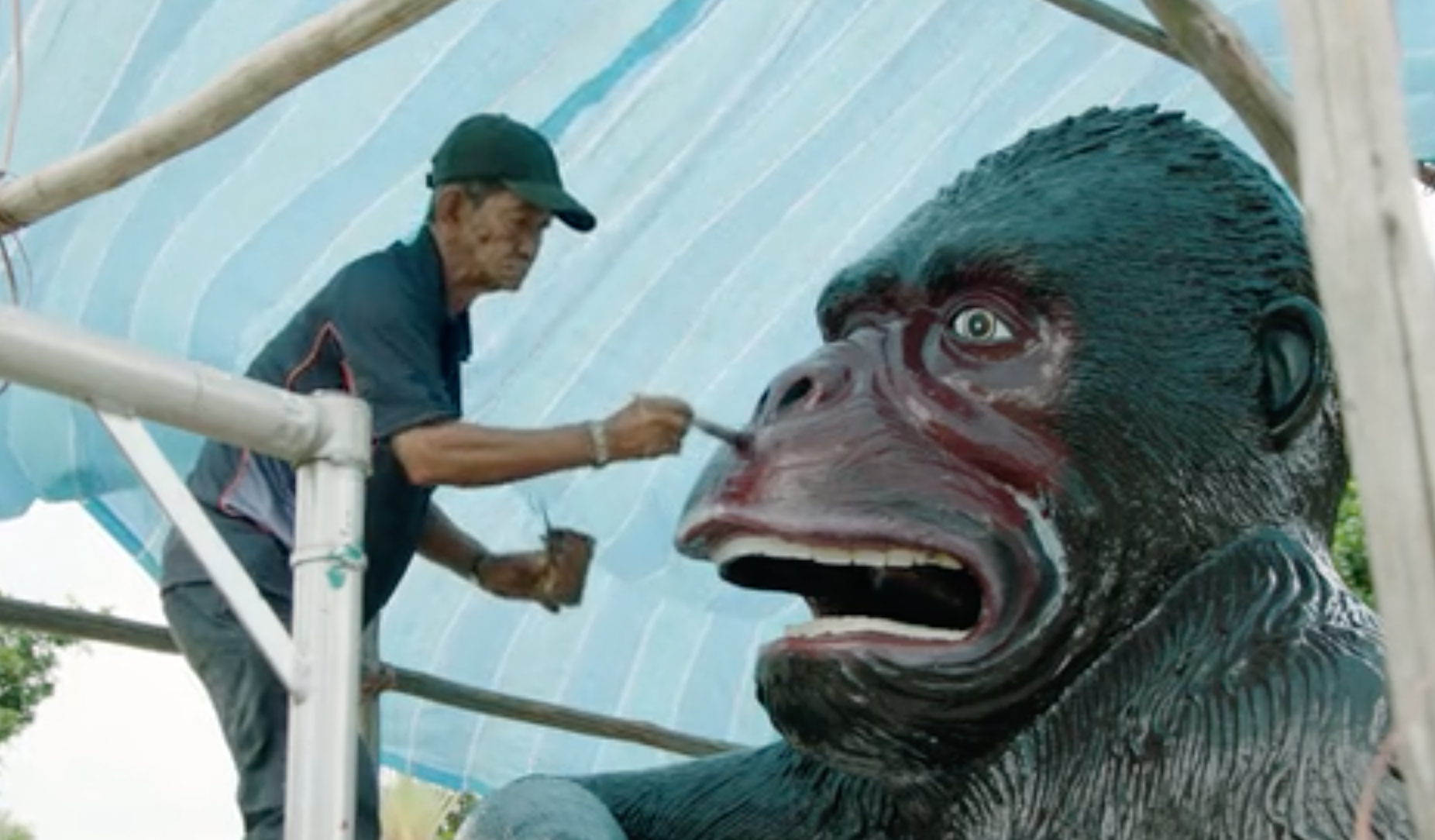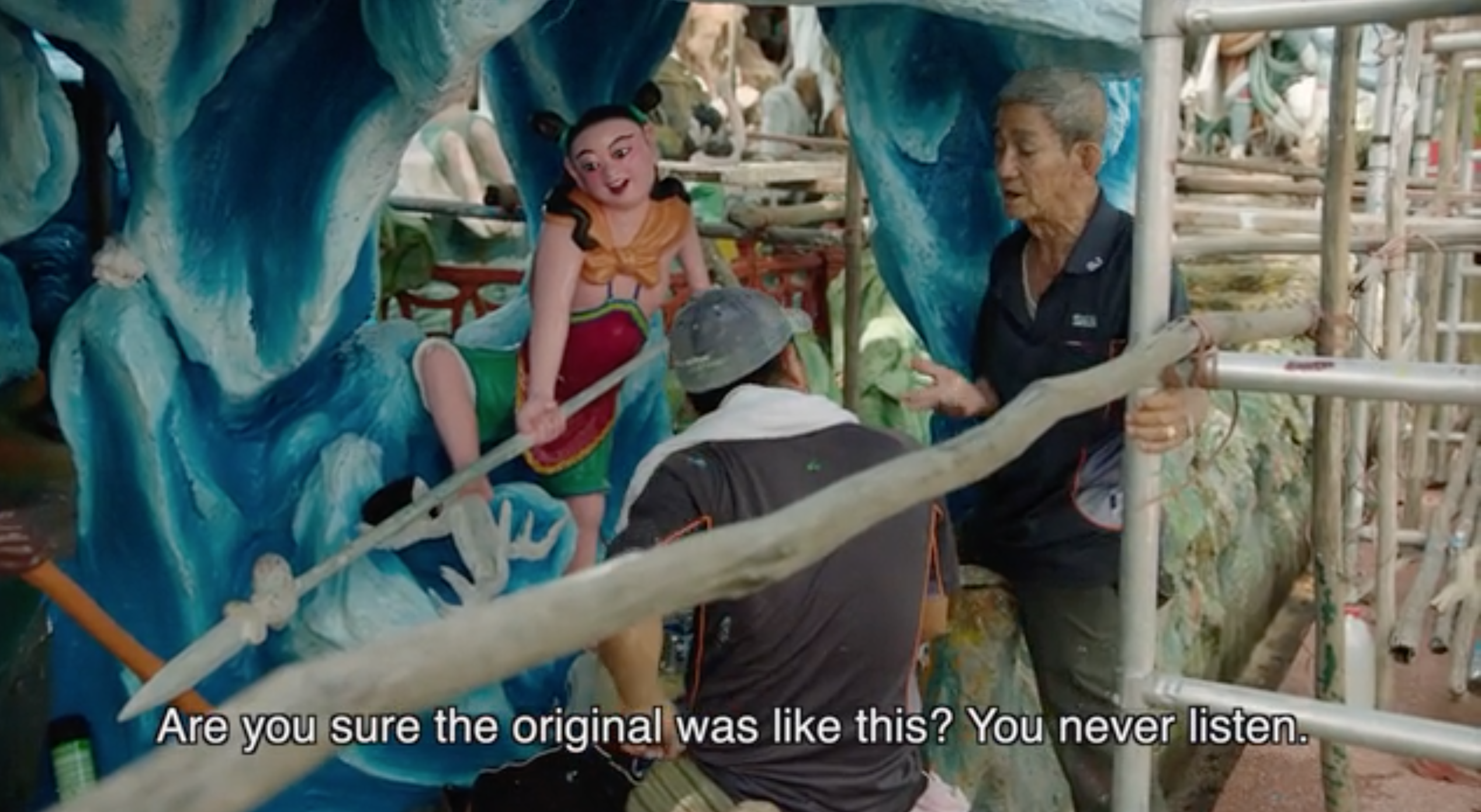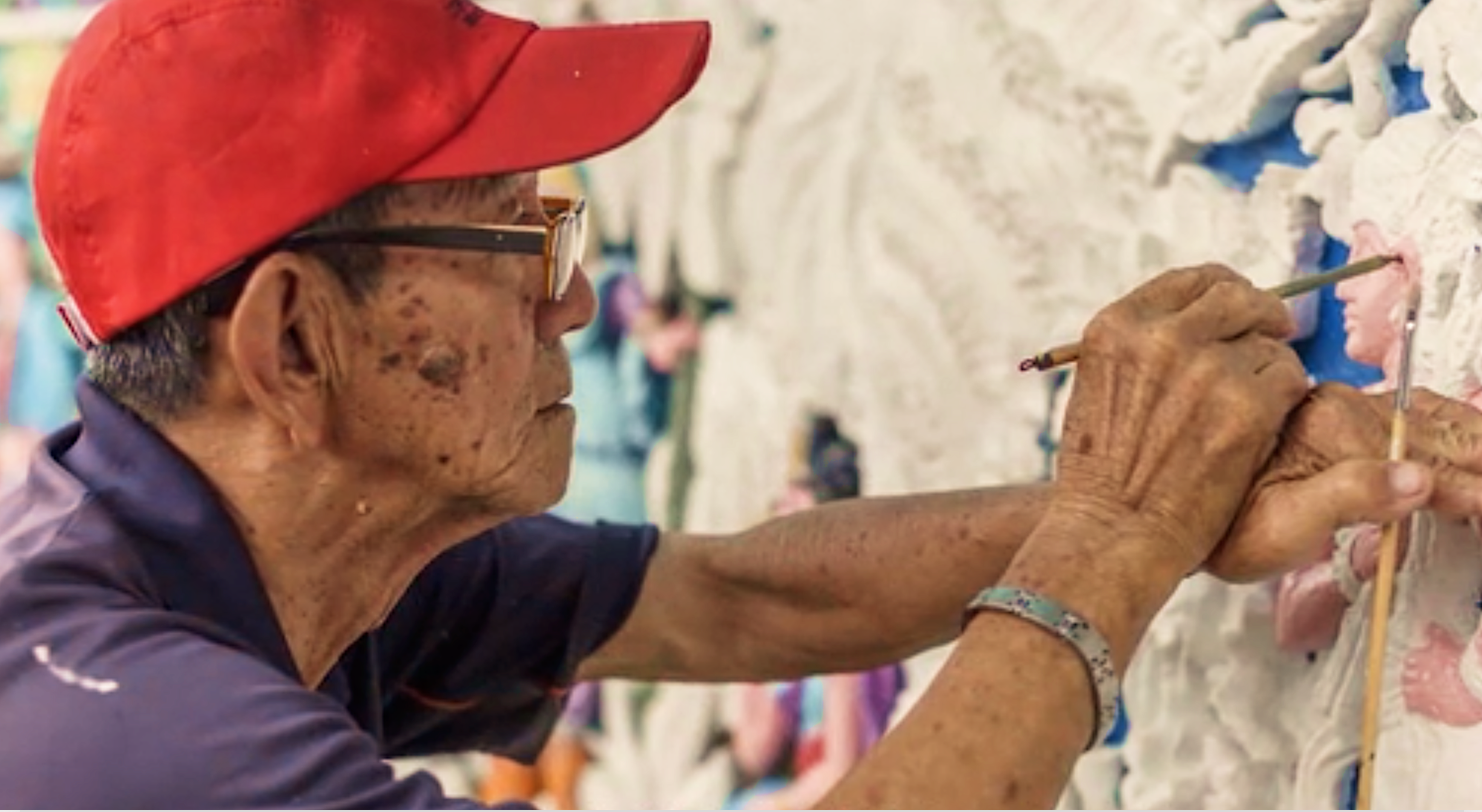For the past 70 years, Teo Veoh Seng has maintained and restored Haw Par Villa's strange sculptures.
Having been in the park all his life, he feels right at home in Haw Par Villa.
A family of Haw Par Villa dwellers
 Photo from NAS.
Photo from NAS.
Teo's family helped the Aw brothers to build Haw Par Villa in the 1930s, and in return, the Aws gifted them with zinc-roofed houses behind Haw Par Villa.
After the park was built, many of his relatives worked within its premises to maintain it and keep it clean. As a young boy, Teo used to to sell drinks in the park until one of the Aw brothers picked him out to become a painter in 1948.
He was only 13 then, but from then on, he began learning the art of creating and maintaining the sculptures from his relatives - a job that was also shared with his father, uncles, grandfather and grand-uncles.
Apart from his relatives, he also received professional training from the master craftsmen who worked on the Tiger Balm Gardens in Hong Kong.
In the 1930s, there were apparently as many as 70 artisans working on the grounds. That number dwindled over the years, though, due to the lack of people in younger generations willing to take up the job.
 Photo screenshot from video found here.
Photo screenshot from video found here.
Teo, however, never left the industry and has spent his entire life working at Haw Park Villa and perfecting the restoration techniques passed down from previous generations.
He is the only artisan left standing. The others have since passed away.
Turned into a documentary
And here's where American filmmaker Craig McTurk comes in. He hopes to turn Teo's fascinating life story into a 70-minute long documentary called The Last Artisan.
What is this documentary about, you ask?
Other than telling the story of Teo's memories and experiences within Haw Par Villa, the documentary also traces the history of Singapore and development, as told through the lenses of the artisan.
Witness to historical milestones
Haw Par Villa played a big role in Teo's life — it was literally in the backyard of his house, the place where he worked, and where he witnessed many of Singapore's milestone events in history, such as the Japanese occupation, unfold.
For instance, Teo recounted how the Japanese army took over the place during World War II and threatened to execute people who breached its boundaries. He also claimed the Japanese also used his house as a look-out post because of its vantage point facing the sea.
[related_story]
The artisan and his apprentice
The documentary also explores how Teo restores sculptures at Haw Par Villa, and how he is working to pass his skill to his apprentice, Chen Jinlong, recruited from Mainland China.
Learning restoration techniques from a master craftsman who has been doing the job for a lifetime is no mean feat — given Teo's strict discipline and high standards, it comes as no surprise that the 50-year-old Chen would struggle.
 Photo screenshot from video found here.
Photo screenshot from video found here.
Currently, the project is being supported by the National Heritage Board (NHB) Heritage Grant, Ngee Ann Polytechnic and Latent Image Productions, McTurk's company. The funds have been used to cover the cost of filming, an animation storyboard for one scene in the film, and preliminary editing.
However, McTurk still requires money to do post-production (such as editing, animating, and sound mixing). To do this, he created a kickstarter campaign in order to raise funds.
Time, unfortunately, is running out for them. Currently, it has only raised $4,950 out of the total $75,000 that it needs, and will only be funded if it reaches its goal by February 15, 2018.
You can read more about the kickstarter campaign, and donate if you wish to, here.
Top photo screenshot from video found here.
If you like what you read, follow us on Facebook, Instagram, Twitter and Telegram to get the latest updates.
